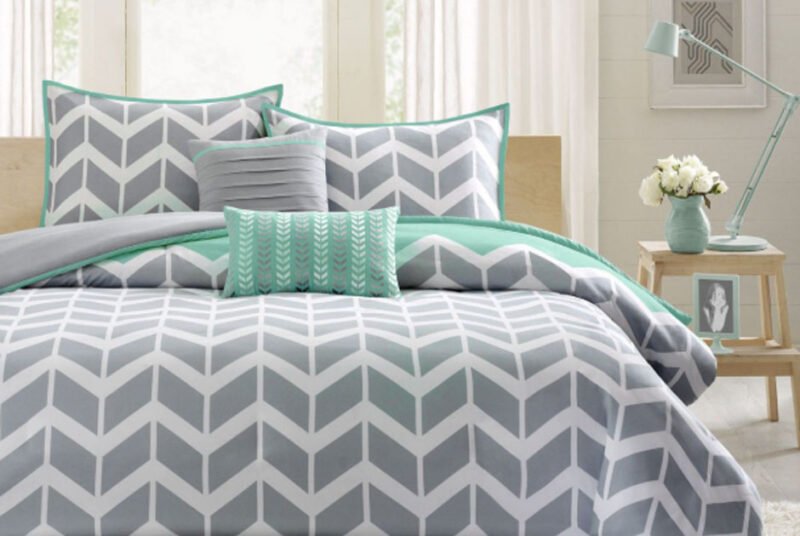Breathable natural plant fibres are used to make linen and cotton sheets. Although both kinds of sheets are effective at wicking away moisture, their appearance, texture, and functionality are different. When deciding between linen and cotton bedding, cost and durability are also crucial considerations. We’ll talk about the feel, longevity, and cost of linen and cotton sheets as we compare them. To help you choose the ideal kind of sheet for you, we’ll also offer some maintenance advice. Trusted by both households and hotels, T & A textiles bedding Manchester offers fashionable, reasonably priced, and high-quality bedding.
Linen Sheets: What Are They?
The woven material used to make linen sheets comes from the plant that produces flax. Sheets of linen have a characteristic crinkly look. These sheets might also begin with being stiff or scratchy to touch, but every washing softens them. “Pre-washed” or “stonewashed” linen sheets are frequently softer in the first place.
Because linen fibres are so strong and resilient, linen sheets may be used for a long time. For sleepers who want to stay cool in a hot climate, linen sheets are an outstanding alternative due to the fact that they’re very breathable and dry quickly.
What Are Sheets Of Cotton?
Cotton’s inherent softness and breathability make it one of the most popular materials for mattress linens. Cotton bedsheets are the best breathable bedding for a cool, restful night, because they are crafted from the fibres of the cotton plant and are very absorbent. Cotton has several uses and types, including Egyptian cotton, Pima cotton, and cotton from organic farms, each with particular characteristics and lifespans. The cloth is ideal for people who’ve night sweats, seeing that its herbal fibres let air circulate freely, assisting in controlling body temperature all night long.
Cotton Vs. Linen: Skin Health And Breathability
When selecting a cloth for daily use or sleeping, breathability is important for skin health in addition to comfort. The flax plant is used to make linen, which has a tighter weave as well as hollow fibres that substantially enhance ventilation. Because it does not maintain moisture or heat, it is ideal for people with touchy pores and skin, individuals who sweat at night, and those who live in warm climes.
Although cotton is also breathable, warmth may also linger because of its tighter weave and moisture-keeping features. Sweat is absorbed, however, not tired away, which could cause irritation, breakouts, or simply that uncomfortable, sticky sensation on hot days.
Choosing linen over cotton is a health preference as well as a fashion choice in case you’re attempting to keep away from skin flare by keeping a healthy body temperature.
Examine And Feel
One of the oldest and most valuable textiles in the world, linen is made from flax fibres and has been cultivated for thousands of years. Roman togas were even made of linen. Considered nature’s conducting fibre, linen has special moisture-absorbing and filtration properties that make it antibacterial and the ideal non-allergenic bedding.
In other words, linen will never feel wet even after absorbing up to 20% of its weight in moisture. For warm sleepers, this makes our bedding made entirely of linen an excellent option.
Cotton Vs. Linen: Bacteria Resistance And Hypoallergenic Advantages
The inherent hypersensitive and bactericidal qualities of linen are yet another noteworthy advantage. It doesn’t require chemical treatments to withstand bacterial growth, mould, and dust mites. This makes it an excellent option for anyone with sensitive skin, eczema, or allergies.
Although cotton is soft and friendly, the textile retains more moisture, which, if not washed often, can encourage the growth of bacteria. Your fabric may be a contributing factor if you have ever awakened with skin discomfort and blamed it on your detergent.
The Myth Of Fabric Irritation And Softness
The famed softness of cotton can occasionally be faked. After a few washes, the synthetic finishing chemicals that give the product its out-of-the-package cleanliness fade off. Additionally, those additional chemicals may irritate sensitive skin.
Yes, linen has more texture at first, but with each wash, it gradually becomes softer. It is not dependent on softening sprays or silicone washes. Rather than adhering or trapping heat, it transforms into a light, breathable smoothness that conforms to your body.
Cleaning And Maintenance
Like all good matters, linen softens with each wash and improves over time. We advise washing on a cool 40 degrees for optimal snuggability. Next, remove the bunting, and consider that one of the most appealing things regarding pure linen is that it doesn’t require ironing. Try not to jump right in after throwing it onto your bed straight from the queue.
Final Words:
Many people agree that linen is the correct material for any season. It adapts to the weather mechanically, keeping you warm in the winter and cool in the summer. But due to the fact that cotton is snug and breathable all year round, it is also a splendid choice for hotter areas. Satin is less adaptable for wider use, although it is probably a nice preference for cooler climates if you want something smoother.









